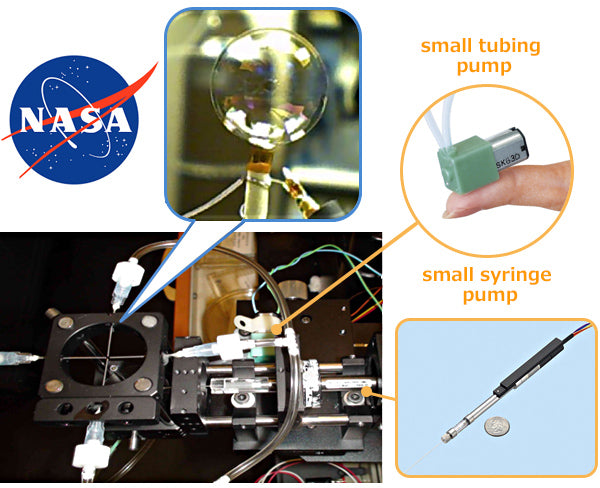- Case Studies
- NASA Glenn Research Center
NASA Glenn Research Center
Small pumps used for single layer liquid crystal formation and defect generation mechanism analyzer in zero gravity

As part of the "OASIS" (Observation and Analysis of Smectic Islands in Space) project that was tested inside the International Space Station (ISS) in 2015, the formation of single-layer liquid crystals and the analysis of defect generation mechanisms in zero-gravity were performed, which is difficult to reproduce on Earth. The aim is to design liquid crystal display (LCD) that can better perform in outer space. The experimental analyzer was equipped with Takasago ultra-compact pumps (syringe type and tubing type).
Challenges and Solutions
To reduce the cost of transporting by a rocket to the International Space Station (ISS) and due to the limited experimental space within the station, they were looking for pumps that was as small and lightweight as possible, and NASA contacted Takasago in 2008. During the development, the specifications of the syringe pump were verified several times and changed according to the results. The experimental equipment itself was successfully launched and tested in 2015 after various long-term verifications, including ground tests and zero gravity tests using aircraft.
Testing equipment used in space experiments must be thoroughly compact and lightweight to minimize launch costs. Of course, quality and accuracy cannot be sacrificed. NASA praised Takasago for responding flexibly to the results of multiple verifications and continuing to provide high-quality products.
View details of Miniature Peristaltic Pumps
View details of Miniature syringe Pumps
